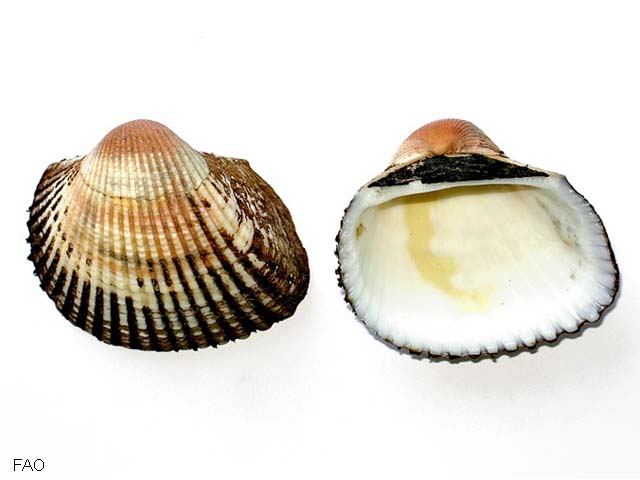| Arcidae () |
| 9.5 cm TL (male/unsexed) |
|
benthic; brackish; marine; depth range 0 - 30 m |
| Indo-West Pacific. Introduced in the Mediterranean and Black Sea. Tropical to subtropical. |
|
Shell thick and solid, inflated, inequilateral, roughly quadrate in shape with arcuate ventral margin and obliquely truncate posterior margin; slightly inequivalve, left valve distinctly overlapping the right valve ventrally and posteriorly. Cardinal area rather long and narrow. About 33 radial ribs (30 to 36) at each valve; ribs as wide as the interstices, granulated on left valve. Periostracum well developed. Internal margins with strong crenulations corresponding with the external radial ribs. No byssal gape. Colour: outside of shell white under the blackish brown periostracum. Inner side whitish. |
| Common depth values based on occurrence. On fine muddy-sand bottoms (Ref. 126564), in bays and coastal lagoons (Ref. 348 and 75831). |
|
Not Evaluated (N.E.) Ref. 123251)
|
|
|
Source and more info: www.sealifebase.org. For personal, classroom, and other internal use only. Not for publication.

